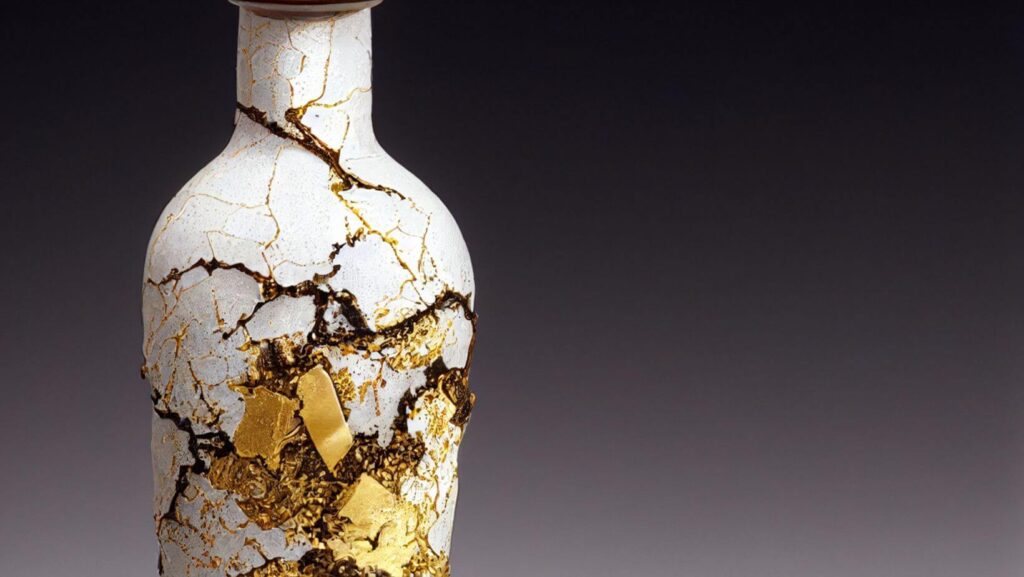Kintsugi, the traditional Japanese art of repairing broken pottery, serves as a powerful metaphor for finding beauty in imperfection. This ancient technique, using lacquer mixed with powdered gold, silver, or platinum, is more than just a method of repair; it celebrates each artifact’s unique history by emphasizing, rather than hiding, its fractures and breaks. The philosophy of Kintsugi teaches that breaks and repairs are part of the history of an object, rather than something to disguise or be ashamed of. It’s an approach that transcends pottery, touching on themes of resilience, rebirth, and the impermanent, imperfect, and incomplete nature of life.
Table of Contents
ToggleKintsugi History
A certain Japanese ruler broke his beloved tea bowl, which was from China. He sent it back to China for repair. The Chinese experts tried to mend the bowl. Unfortunately, the results were unsatisfactory.
The ruler then instructed his Japanese craftsmen to handle the repair. They operated on the principle that if the damage cannot be hidden, it should be highlighted. They mended the cracks with lacquer to which they added precious metals (like powdered gold). They presented the mended bowl to the ruler, who was delighted with their idea and began to use his favorite vessel again, enjoying its beauty.
Kintsugi Today
Today, this method of embellishing imperfections is called the art of KINTSUGI. It is also a philosophy that encourages us to reconcile with the adversities of fate. Everyone has golden cracks that we should not be ashamed of. Our imperfections, mistakes, and failures can be our strength. When I start my training, I openly say that I am imperfect and make language mistakes. However, I am here to provide value to others. Admitting to imperfections allows me to be more natural and often builds more trust with my audience. I often also show the beauty to my clients, who have stopped noticing what they have within themselves. They have stopped noticing that they have talents, knowledge, and experience that others do not have.
Conclusion: Finding Strength in Our Flaws
The practice and philosophy of Kintsugi offer profound lessons. They teach us that what may appear flawed or broken can be transformed into something of greater beauty and resilience. This approach is not limited to physical objects but extends to our personal experiences. Accepting and embracing our imperfections can lead us to a more authentic and fulfilling life, where each ‘crack’ is an opportunity for growth and transformation, reinforcing the idea that there is immense strength and beauty in our flaws.
I am dedicated to helping leaders transform their approach to team engagement, ensuring that employees are not only aware of their roles but are also efficient and autonomous. Through my experience as a trainer, coach, and mentor, I have developed strategies that aid in identifying and addressing waste in companies, fostering a culture of decisive and independent team members, and promoting a collaborative and efficient work environment. If you find yourself caught in the cycle of constant decision-making, dealing with unengaged employees, or facing team conflicts, I’m here to support your journey toward an empowered and proactive team. Together, we will focus on enhancing communication, promoting collaboration, and aligning your team’s efforts with organizational objectives.







